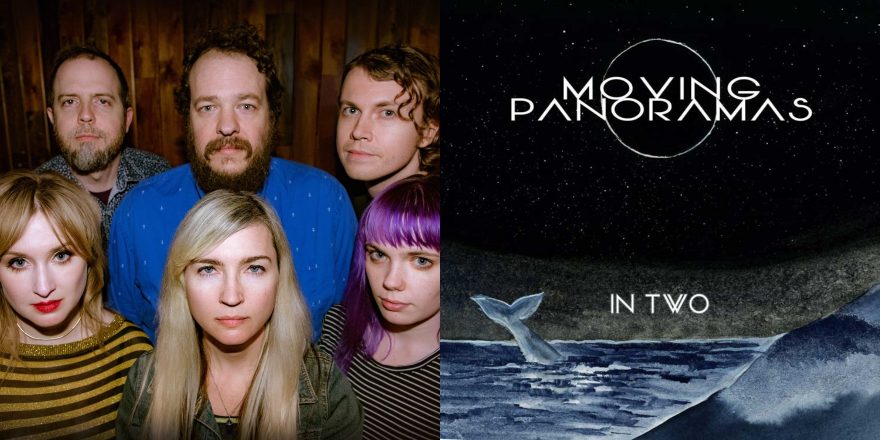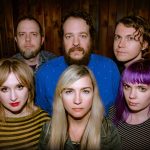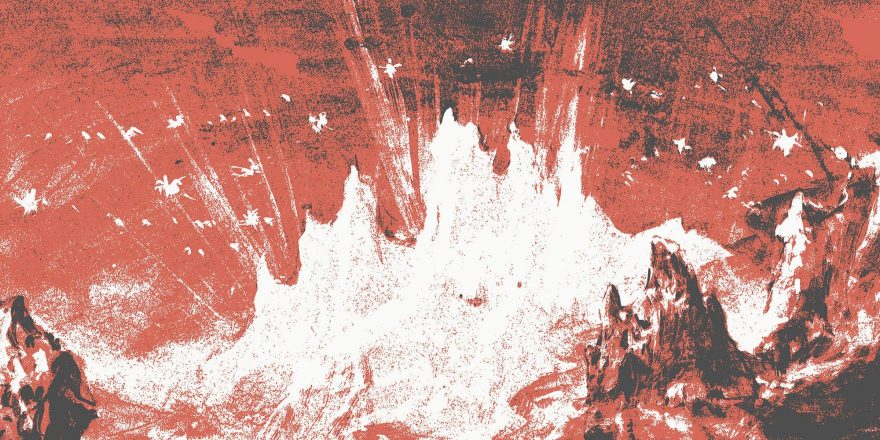I began college as a music student, leaving my hometown of Duncanville, TX, to move up the road to the University of North Texas in Denton. I hoped to someday become a composer. While there, I took a film elective that changed the course of my life.
The class was called Non-Western Cinema and, specifically, it was the work of Polish filmmaker Krzysztof Kieślowski—known for his Three Colors Trilogy (Blue, White, Red)—that changed everything. The French/Polish predecessor to that series, The Double Life of Véronique, was what inspired me to pack my bags and move down to the University of Texas at Austin to study film. This eventually led to a masters degree in transmedia, relocating to NYC, and touring internationally playing music.
The film is about two identical women, both played by Irène Jacob, who are musicians who don’t know each other, and who are living different lives in different countries. Despite this, they both possess a deep emotional connection with one another that transcends space and time. I’ve always felt a connection to Véronique’s character in this film, and once I started touring in bands, that double life became the tone of my own on many levels.
To this day, duality is something I experience more than the average wanderer. I’ve not only managed a fairly long career as a working musician, but it has also been balanced with a career as a video editor which helps me afford to play music without the stress of starving. Somewhere in there I also manage to find the time to rescue and foster special-needs pups—but that’s another story, maybe for the third record.
This band exists due to dual back-to-back traumas that led to its inception as a healing outlet. Trauma #1 was my mom’s unexpected passing from complications with medications in a suspected overdose, after years of battling and nearly overcoming chemical dependency. This was hours after I had just seen her, and after I’d finished a solo record that never saw the light of day.
Trauma #2 happened months after my mom’s death, in the same home where she passed. I was drugged and kidnapped in the middle of the night during a random home invasion. I managed to escape and the criminal was caught, but it turned out he murdered a family before getting to me. For six years, he awaited trial for capital murder, to which he pled guilty in exchange for two life sentences without parole or appeal around this time last year.
I feel like I’ve been leading a double life since, while trying not to let the PTSD define me. Putting on a strong face to try to keep things together to survive and pay the bills, but falling apart on the inside. Trying to rebuild what was destroyed by the trauma that affects every aspect of my life still to this day, especially with anxiety, and now with my health. The only way I felt like I could heal, without meds, without substances, was through music. That’s how these songs originally began and that story still resonates on many levels on this next album, too, with new layers of battling autoimmune health issues delaying its production.
Thus, everything in my life right now takes on multiple forms, including the new Moving Panoramas record, In Two, which is essentially an album about duality. It’s also a sequel to the debut record, breaking the concept of One, In Two. When I was writing One, I was living in Brooklyn and Austin, which I referred to as bi-zonal. At that time, even though the first record was primarily about oneness, with each song usually being about one specific inspiration, I was actually living a double life in two different cities. Since then, I have settled back in Austin full-time, yet somehow the duality still finds its way to me.
As a songwriter, when I sit down to write something, I initially begin with one idea. As the song progresses, perhaps new meaning takes form. With In Two, nearly every song on this record has multiple meanings or leads a double life. However, listening to it, one may never know. You may think, “Oh man, Mr. Baby Blues shoulda given her one more shot.” Or, “That Dance Floor cowboy should’ve tried harder.” Or, “Dang, that Whiskey fella shoulda put the bottle down.” Well, lo and behold, these songs are not just about one person or one idea—they’re usually about two. Or, at least, they’re broken In Two…
♦
“BABY BLUES,” though not the oldest written song on the record, was the first song written specifically for this record. It initially began about someone specific who I was quite fond of, probably the fondest I’ve been of anyone yet. But that fondness never really culminated into anything more than friendship—my M.O., always the buddy, never the babe. As the song progressed, it was still about him, but those blues kinda split in two and eventually became about not having a baby, too. I had an unplanned miscarriage while writing this record. It was something I hadn’t really dealt with before, nor understood that kind of loss. “Baby Blues” is about the blues and confusion that accompanies missed opportunities. Some things are just outta our hands and we have to let go.
“DANCE FLOOR” is a true story, based on true events, word for word. Another aspect of my own musical duality is that I have a country band called the Rated Exes. One night after a show, I stepped off stage and a friend asked me to dance. Even though I spent most of my childhood in honky tonks—one of which was Billy Bob’s in Fort Worth, TX, which my mom used to co-manage—I never actually learned how to two-step, for some reason. “How is that possible?” he asked. “Because I spent all my time learning to play the music instead of learning to dance to it,” I replied. He reached out his hand and said, “Well, what are you waiting for? Now’s yer time.” I froze and pointed to a mutual friend on the dance floor saying what a great dancer she was. He turned around to look and I bolted out the back door.
I knew this would take on double meaning when I sat down to write it, though. My late mother used to tell me to “dance” all the time, inspired by her favorite song “I Hope You Dance” by Lee Ann Womack. In fact, those were the last words that I’d ever hear from her in person before she passed: that she was so proud of me, and to keep on dancing. I used the song in the soundtrack to her memorial service video. I still can’t hear it without crying.
To dance was her metaphor to live. She was always the one who taught me to follow my heart. This song is not only about conquering physical fears, it’s also about not being afraid to live, to really live, and to follow your heart and dreams. Life is too short to not dance. I did eventually learn how to two-step years later (read further to learn more). Two-Step was actually the original working title of this record.
“HOME ALONE” isn’t about the movie, as much as I wish it were. It’s… well, wait—that movie is about a home invasion/burglary. Hmm, Leslie. In some ways, I guess it does relate. It’s definitely about about being home alone, battling the effects of PTSD and anxiety due to the home invasion/burglary/kidnapping years ago that led to the birth of the band. However, once I got courage to go out on my own, it also related to an ex who left me home alone when I was recovering from a surgery that could’ve been fatal. I passed out from the pain from not being able to move, helpless, and alone. There’s memories of another ex sprinkled in this, who had a hard time with me being in a band, so he sometimes stayed home alone instead of coming out to support our shows. God forbid he help carry gear if he was around—he always had to leave by that time of the night. Oddly, he lived in a Home Alone-like house… Hmm again. Maybe he’d let us shoot a music video there, if only to be able to say “Merry Christmas, you filthy animal!”
“ON HOLD” is about patiently waiting in the wings for a moment to fall in place, not only with matters of the heart, but also with music and this record being delayed for so long. “It’s nothing but feels like something” is a conflict I’ve struggled with way too many times with false alarms, false starts, and false hearts. This was originally written for the first record, but the former drummer didn’t think it was a fit. It wasn’t until revisiting with the band’s current lineup that I was able to de-singer/songwriter the song into something dreamier. It might be my favorite song on the record… a close tie with “In Tune,” at least.
“FOREVER GONE” was written days after SXSW 2017 when our drummer’s mom passed unexpectedly and he had to rush out of state to be with his family in the middle of the festival. It was tragically heartbreaking for him, and dug up a lot of what I called “ghost dreams” that week for me. These dreams are ones where I’m visited in my sleep by those I love who are gone —whether it be my late mother, late grandmother, a late pet, or even a lost love who is still alive but no longer in my life—and I don’t want to wake up. The duality here is that it was initially about my mom, but as I was writing it, became parallelly about one specific lost love who is all over this record and keeps coming back… in dreams. In Dreams was the second working title of the album.
“WHAT NOW” was the last song written for this record. It was originally going to be the last song on the record. It’s about losing a muse, of which I’ve had a few, and for some of whom I suspected that I, perhaps, may have been their muse too. But not anymore, as they’ve moved on to new loves, partners, spouses, families, etc.
So what now? It’s also about writer’s block. I don’t think I’ve written a new song for Moving Panoramas since this song. I have written some country songs for the Rated Exes, but for Panoramas, my muse is faceless at the moment. Now that I’m overcoming the traumas, what will I write about next? I’m not too concerned. It’s all part of the cycle. By the time this record has run its course, “What now?” might change to “Now this.” Or, “Now it’s this,” since the next record will be based on threes. Third time’s a charm.
“ADD HEART” was originally inspired by a couple of specific people who were so desperate for attention and affection, yet their seemingly good intentioned ADD hearts would adversely affect relationships time and time again due to lack of focus, fear of commitment, oversaturation of options, perfectionism, idealism, etc. In this song, I ended up turning the selfie camera towards my own ADD, not necessarily relating to matters of the heart as much as every other aspect of my life. Sometimes my focus can be scattered and distracted by having too much going on and not being able to slow down, focus, and realize/appreciate what’s in front of me in the moment. Easier said than done.
“BEAUTIFUL SAD” might sound like it’s about someone else, but it’s actually primarily about self-esteem—trying to boost myself in the mirror when I’ve hit an emotional low to the point of tears. Part of the duality here is the difference between verses and the choruses. The verses are about someone else who has moved on, realizing we’ll never be, but the choruses are about how my eyes terrify me when I see them cry. I have to assure myself these icy, glassed-over windows of darkness are going to be ok and deserve to see another day. It’s about trying to find beauty in yourself, as well as finding beauty in sadness, and instead of feeling sorry for myself, being happy for the beauty someone else has found.
“WHISKEY FIGHT” is probably the most direct song on the record. It’s primarily about about a former significant other who was aware of the darkness that accompanied his whiskey intake, but still would partake (because whiskey is delish), eventually resulting in the end of our brief romance. I, too, was guilty of it myself at times, only occasionally in excess, which added fuel to the fire. This is someone who is a great friend now, practically a best friend, and who has since given up that darkness for the light (tequila—ha!—or just soda) like a champ, inspiring me to do so as well. He also inspired me to learn to two-step, and we took private dance lessons long after we dated, just as friends. I’m very grateful for his friendship and it just goes to show that sometimes out of the darkness comes great light.
The duality of this song is that I was also trying to put myself in my mom’s shoes to understand why she continued in an extremely, painfully long relationship with an alcoholic abusive boyfriend for years and years who was horrible to me growing up. He was a cowboy who drank whiskey like water and told me I’d never amount to anything. This tune also has a country version tracked as a b-side by the Rated Exes—it was originally written as a country song. Another double life to this song that’ll hopefully see the light of day soon.
Here’s to not letting that alcoholic cowboy from my childhood influence my self-worth anymore, and here’s to my dear friend for helping me find the light.
“IN TUNE” almost didn’t make it on this record, but luckily it did because it ended up catching the ear of Nada Surf’s Matthew Caws, a dear friend and former neighbor from when I lived in Brooklyn. The male voice gracefully doubling me the whole time is him, sent from somewhere in between his busy tour dates this time last year. Not only is there duality in our male/female vocals throughout, but this is probably the most complex song on the record, story-wise. It’s about the challenges of subverting social conventions in relationships, families, careers, music, etc. that break the nuclear mold.
I had a close friend many years ago who was constantly asked why she and her partner of nearly a decade were never married. Her response was something to the effect of, “I don’t believe in marriage as long as same sex marriage isn’t legal. It’s not fair that I can get married because I’m straight but my gay friends can’t marry their partners. Whenever it becomes legal for everyone to marry, regardless of sexual orientation, maybe I’ll marry.” She eventually got married a couple years ago.
This song is along those lines, how it’s hard to find the right place for yourself when the world around you isn’t quite in tune with the place you’re trying to find yourself in. I have a hard time feeling in tune with anything lately, given how much our world and especially our country has fallen so out of tune with what we’ve worked so hard to improve over decades with equality, humanity, kindness, feminism, and the laws trying to govern my body aiding in my fear of ever connecting with another human being ever again. This is only temporary… right? Here’s to hoping for the future and getting those frequencies back in tune soon.
♦
To top this all off, while all these songs might have their own deep, multiple meanings for me, I’m learning that songs can also have multiple meanings for listeners too without being too vague or too direct. I used to be too vague in my artsy days, because I was afraid I’d reveal too much and give myself away. I realize now that a good song can still do that by connecting with a listener rather than alienating them, giving them a chance to relate on their own. The right dose of story combined with the right dose of mystery equals the right dose of connection. Well, that plus the right doses of sounds, rhythms, and melodies too.
Carly Simon’s “You’re So Vain” became a hit sensation while everyone was wondering who the heck is this song about—James Taylor? Mick Jagger? Warren Beatty? Eventually she admitted to the latter a few years ago, but part of that song’s magic was the nearly half-century long cliffhanger of not knowing, deciding for ourselves, or perhaps wondering if it’s about all of them. The fact that she doesn’t say “James, you’re so vain”—although that kinda has a ring to it—is probably why we connect with it so much. The mystery and ambiguity behind that idea gives the listener an opportunity to connect with it on their own level, to make it easier to relate, or even to make the interpretation their own.
Sometimes less is more… or more is less… more or less. But regardless, the songs that really matter, at least to me, are the ones that simply reflect a true, sincere soul, regardless of the story or genre. That’s all I can hope for with my own music too.







